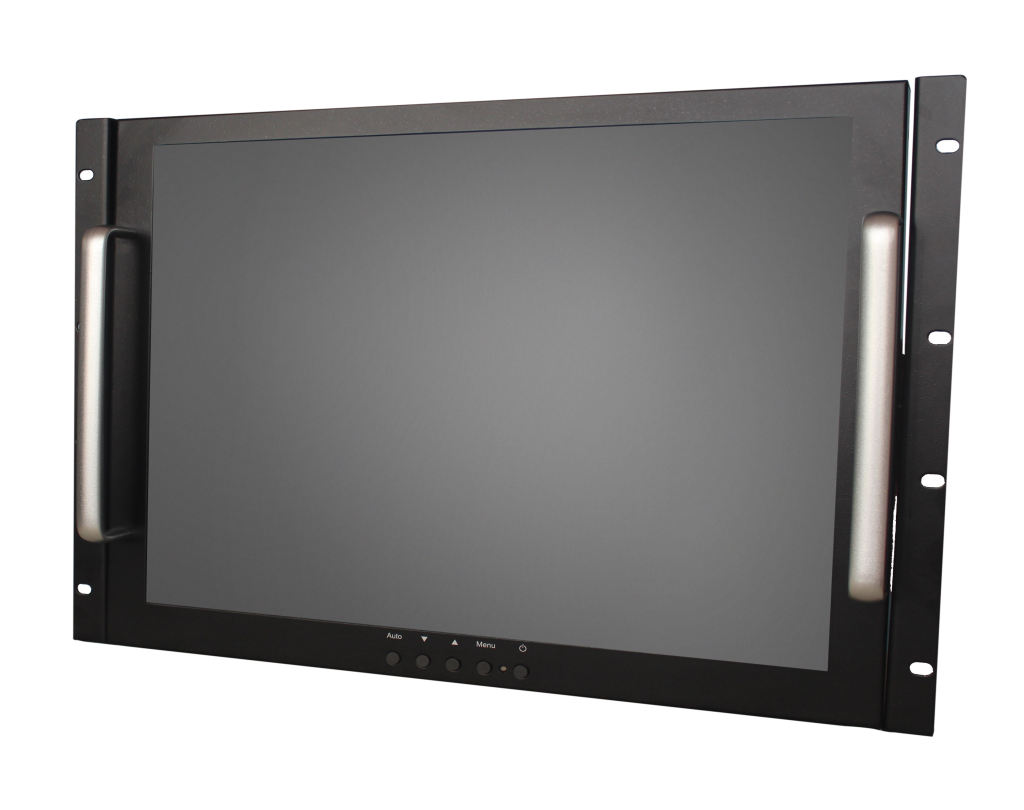Rack mount monitors are specialized display units designed to be mounted within standard 19-inch server racks or equipment cabinets. These monitors are essential in data centers, broadcasting, telecommunications, industrial control rooms, and other environments where space-saving and efficiency are crucial.
Rack mount monitors are flat-panel displays that are designed to fit into a rack system, typically measuring 1U to 4U in height. They can include additional features like integrated keyboards, KVM (Keyboard, Video, Mouse) switches, and touchscreens, depending on the specific model and application requirements.
Benefits of Rack Mount Monitors
1.Space Efficiency
Rack mount monitors maximize the use of available space in a rack system, helping to keep workspaces organized and efficient.
2.Integrated Solutions
Many rack mount monitors come with integrated keyboards and KVM switches, reducing the need for separate peripherals and simplifying cable management.
3.Durability and Reliability
These monitors are built to withstand the demanding conditions of industrial and data center environments, offering robust construction and reliable performance.
4.Convenient Access
Provides quick and easy access to multiple servers and systems from a single location, enhancing operational efficiency and reducing downtime.
5.Enhanced Security
By centralizing control and reducing the number of exposed components, rack mount monitors can contribute to enhanced security in restricted access areas.
Applications of Rack Mount Monitors
1.Data Centers
Used for monitoring and managing servers, network devices, and other critical infrastructure.
2.Broadcasting and Media Production
Employed in control rooms and production studios for video monitoring, editing, and broadcasting.
3.Telecommunications
Utilized in network operations centers (NOCs) for monitoring and managing telecommunications equipment.
4.Industrial Control Rooms
Used in SCADA (Supervisory Control and Data Acquisition) systems and other industrial applications for monitoring and controlling processes.
5.Military and Defense
Deployed in tactical operations centers and command centers for real-time data monitoring and decision-making.
Installation and Maintenance
Installation Steps
Rack Preparation: Ensure the rack is properly secured and has enough space for the monitor.
Mounting: Attach the mounting brackets to the monitor and secure it within the rack using appropriate screws and tools.
Connection: Connect the monitor to the necessary power and data cables, ensuring all connections are secure.
Configuration: Configure the monitor settings and any integrated KVM switch as needed.
Maintenance Tips
Regular Cleaning: Keep the monitor and surrounding area clean from dust and debris.
Inspect Connections: Periodically check all cable connections for wear and ensure they are securely attached.
Firmware Updates: Keep the monitor’s firmware up-to-date to benefit from any performance improvements and security patches.
Temperature Control: Ensure the rack environment is properly ventilated and maintains an appropriate temperature to prevent overheating.

